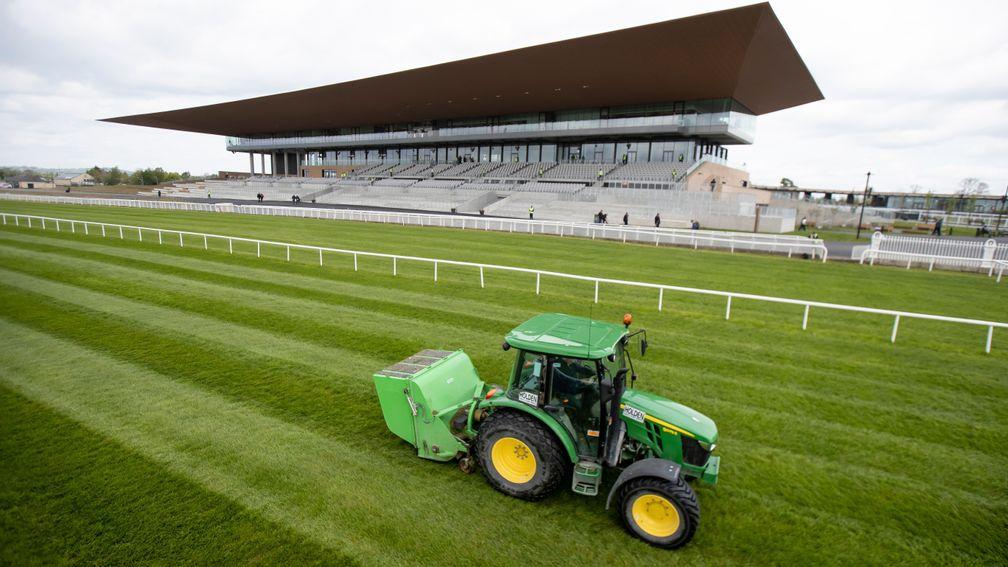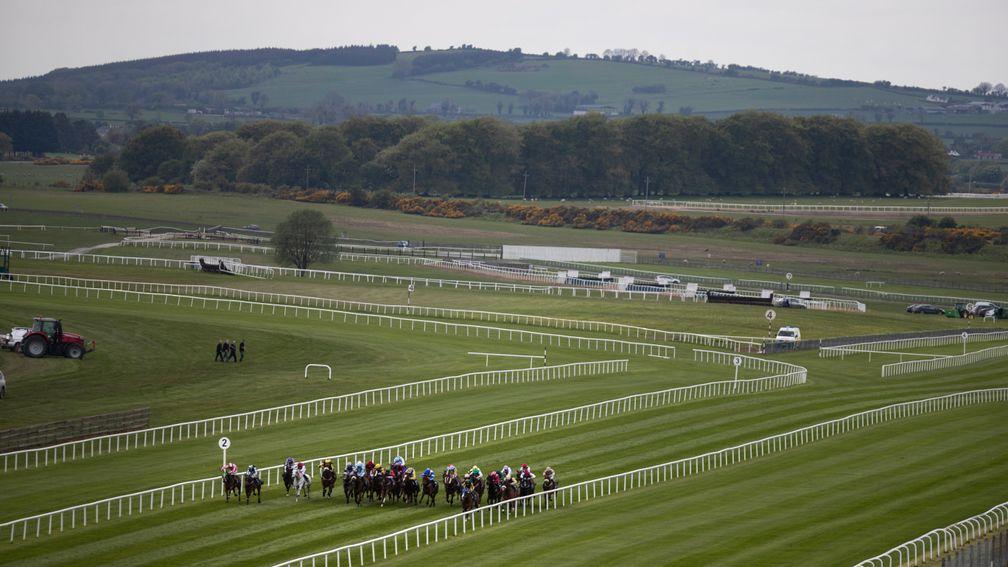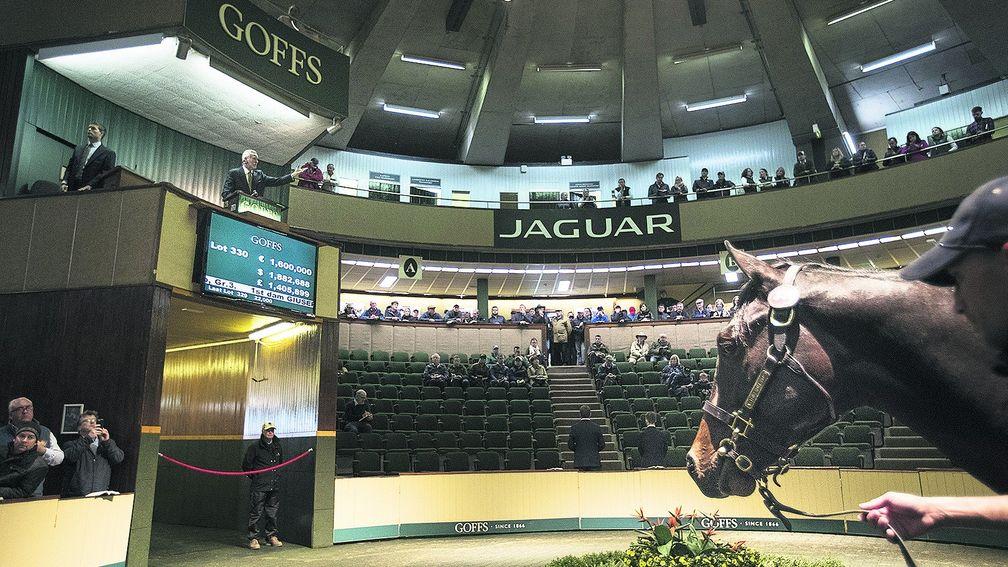Sheep laws and beaver hat bets: Nine things you may not know about the Curragh

1. Perfect place to prepare for battle
One of Europe's oldest natural grasslands, the Curragh plains host many of the country's leading stables. On approximately 1,500 acres of racecourse-owned training grounds, roughly 1,000 horses are cared for by 60 trainers every day.
While we might recognise the racecourse primarily as a battleground for some of the biggest jousts in international Flat racing, the vast Curragh landscape also serves as an Irish military base that features the primary training centre for the state's Defence Forces.
It's expansive terrain has a military heritage dating back to at least the beginning of the last millennium, with the first permanent structures built in 1855 by the British army in preparation for the Crimean War.
2. Sheep hold rights to graze
Drive on the Curragh and you'll notice no shortage of sheep grazing the land – and that is no surprise as they have been legally entitled to be there through Victorian legislation.
According to the Curragh Act of 1870, sheep hold grazing rights to the land, something that came to prominence during the foot-and-mouth outbreak of 2001 when farmers refused to remove their sheep. Even Frankie has to pay second fiddle to our woolen friends.
3. Early name change for Classic
The success of Derby day at Epsom in the early 1800s was an attractive model to follow for racecourses overseas and the Irish Turf Club attempted to create their own equivalent in 1817 (as did the Kentucky Derby in 1875).
A forerunner of the Irish Derby, the O'Darby Stakes had a short-lived existence between 1817 and 1824 and was open to three-year-olds only who had been entered as foals.

The mile and a half contest was discontinued after three-runner fields in 1823 and 1824, and in 1848, a new race named the Curragh Derby was trialled, also proving unsuccessful.
However, 16 years later, the Irish Derby Sweepstakes was born. Entries were taken for yearlings to run two years later in June 1866 over two furlongs further than the Epsom distance and the produce of untried sires and mares would also be allowed a 3lb allowance.
The conditions would later change again in 1874, creating a 36lb weight range in a bid to increase field sizes.
4. Match races make headlines
While the great match races such as Seabiscuit versus War Admiral and Dawn Run taking on Buck House have made for great racing spectacles, the concept of one-on-one battles have been taking place at the Curragh for centuries.
These match races also attracted side-bets and one of the earliest recorded match events in Ireland took place in April 1634 when the Earl of Ormond's horse took on Lord Digby's horse over four miles on the Curragh.
One of the side-bets to the match involved the loss of the Earl Of Cork's beaver hat to a Mr Ferrers.
The victories of the Padareen Mare are also remembered in song, with memorable successes, such as the King's Plate, in the 1740s.
Her name derives from the Irish for rosary, 'paidrín', with her owner Mr Archbold of Eadestown, County Kildare, hanging rosary beads around the mare's neck for luck.
Another star mare, Apple's Jade was spotted wearing the medal of Saint Christopher, the patron saint for safe travel, on her bridle at Aintree earlier this year, as is the case with plenty of Gordon Elliott's runner's at the major festivals.
5. Colourful Croker is Curragh king for a day
As far as Classic-winning owners go, there can't have been many more colourful characters than Boss Croker, responsible for the 1907 Irish Derby winner Orby.
The Cork native emigrated to New York in famine times and rose to be leader of Tammany Hall, a political organisation synonymous with corruption which was controlled by the Democratic party.
Reported to at one stage have been collecting 27 different salaries from the area at the same time, as well as having been on trial for the murder of a man on election day in 1874 (which he was aquitted of), Croker also had a major passion for racing and owned horses.
Upon returning to Ireland, the man who married a Cherokee princess roughly 60 years his junior would go on to own the first horse to complete the Epsom and Irish Derby double, the aforementioned Orby.
Having landed a significant gamble with the immensely talented colt at the Surrey track and seen his horse return to bonfires and a brass band parade on the streets of Dublin, he then set his sights on the Curragh, where he offered to increase the prize-money of the Derby.
That was, if the Turf Club allowed him to become an elected member of the organisation, but they declined his request.
Nevertheless, Orby bolted up in the Curragh Classic at odds of 1-10, the shortest price ever in Derby history – only closely matched by Australia's starting price of 1-8 in 2014.

Orby produced Classic winners at stud such as Epsom hero Grand Parade, and died in 1918. Croker passed away four years later at the age of 80, but his champion performer is remembered at the Goffs sale named in his honour.
6. Railway line remembered
Even after the Irish Derby was inaugurated in 1866, the Railway Stakes for two-year-olds remained the most valuable race run in Ireland for much of the rest of the 19th century.
The race, which is currently a Group 2 run on Derby day, was first run in 1851, with money subscribed by the Great Southern & Western Railway Company and the Turf Club.
Between 1856 and 1977 the 'Curragh siding' operated, delivering racegoers close to the back of the main Grandstand.
7. Sweet music from Crosby after Meadow victory
While the much-missed Oliver Brady was known to entertain racegoers after saddling a winner, an impromptu performance from a music legend greeted Curragh racegoers back at the 1965 Derby meeting.
American Bing Crosby, one of the biggest stars in music with hits such as White Christmas, part-owned Meadow Court (aptly out of the mare Meadow Music) who landed the Classic as the 11-10 favourite under Lester Piggott.
Trained by Paddy Prendergast, father of Kevin who saddles Epsom runner-up Madhmoon in this Saturday's feature, Meadow Court was cheered on to victory by Crosby who was on hand to collect the prize at the track and sang 'When Irish Eyes Are Smiling' in the winner's enclosure.
This came just two years before America's former First Lady Jackie Kennedy visited the track for Derby day and received a warm welcome from the crowd.
8. Ownership changes
The Curragh has undergone major redevelopment in recent years and this was driven by a significant change in the track's ownership structure in 2015.
Initially, the home of the Irish Classics was owned by the Turf Club (renamed the Irish Horseracing Regulatory Board) but they divested ownership in return for investment from Horse Racing Ireland and a private investor group.
The IHRB, HRI and the investor group now each own a third of the Curragh Racecourse company and the venue has seen an €81m revamp that was officially opened by the Taoiseach Leo Varadkar and HH the Aga Khan on Guineas weekend last month.

9. Seamie a punters' pal in Irish Derby
Aidan O'Brien holds an unparalleled record of 12 Irish Derby successes but you may not know that following Seamie Hefferan in the Classic has proved most profitable for punters in recent years.
A €5 each-way stake on each of Heffernan's Irish Derby mounts since 2007 would see you €129 in profit, an impressive feat for the rider considering he hasn't ridden the stable's first string in the race since 2005.
This is in contrast to Ballydoyle number-one Ryan Moore, who is still seeking a first success in the feature having ridden the favourite four times since 2008.
His absence from the roll of honour isn't as noteworthy as Mick Kinane's Derby drought, which ended after 18 previous attempts aboard Galileo in 2001.
For the freshest betting advice, based on latest going and market conditions, don't miss the Live Tipster every afternoon. Just click Raceday Live at racingpost.com or the mobile app
Published on 25 June 2019inNews
Last updated 10:10, 25 June 2019
- Merci Olivier! No final winner for Olivier Peslier but the world of racing unites in saluting the end of a great career
- The latest edition of the Racing Post is available to read online now - here's how you can access it
- How Smart View recorded a 76 per cent profit at the Cheltenham Festival
- Smart View is available on the Racing Post app - how to read the revolutionary new racecard
- Levy reform talks 'accelerating' as clock ticks down to April deadline for agreement
- Merci Olivier! No final winner for Olivier Peslier but the world of racing unites in saluting the end of a great career
- The latest edition of the Racing Post is available to read online now - here's how you can access it
- How Smart View recorded a 76 per cent profit at the Cheltenham Festival
- Smart View is available on the Racing Post app - how to read the revolutionary new racecard
- Levy reform talks 'accelerating' as clock ticks down to April deadline for agreement